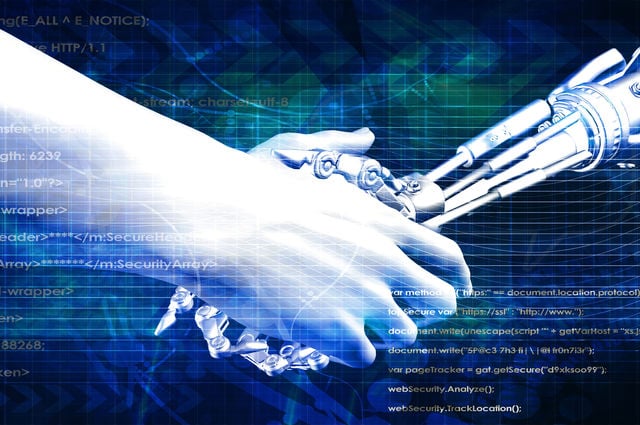Why High-Tech and High-Touch is the Only Way Forward in Hospitality?
11 experts shared their view
Today there are 850,000 open positions in U.S. hospitality and leisure with NO TAKERS. Similar is the situation in Europe and APAC: a lot of unfilled hospitality positions.
Offering sign-up bonuses and poaching employees from your competitors is simply unsustainable since your competitors or their competitors will poach them back. From temporary phenomenon, labor shortages have become a permanent reality and hoteliers have to learn to live with it.
Whether hoteliers like it or not, the hospitality industry is moving from low-tech and high-touch to high-tech and high-touch. But what kind of high-touch? Fewer, well-trained and well-paid employees using technology to provide stellar service. Service, which currently the poorly paid and trained employees, overwhelmed by labor shortages and mundane, repetitive tasks simply cannot provide.
The question is, how can hoteliers use technologies to reduce their staffing needs and afford to pay their employees living wages, train them better and empower them with the right tools to provide stellar service?
High-Tech and High-Touch is the Only Way Forward in Hospitality
The words 'permanent reality' are hardhitting and oftentimes hard for hotel decision makers to absorb. While there are a host of technologies that can be added to the stack to help chip away at the labor problem, what I pose instead is to go one level deeper and look at the human stack. Namely, when trying to rationalize why the industry isn't perceived as investing enough in technology, consider the adage, 'Show me the incentive and I'll show you the behavior'.
When personal KPIs for executives are largely oriented around scrupulous cost savings and the quarterly business cycle, we tend to neglect those investments that don't have an immediate ROI. These indirect types of investments, whether tech-based or not, may be reflected over the long run (longer than one quarter) through metrics like fewer sick days and less staff turnover.
The key is to rethink what measurements we value so that employee productivity, wellbeing and career advancement are prioritized, thus leading to reduced churn and easier talent acquisition. Valuing technology investments and the IT teams that deploy these technologies are critical aspects of this KPI rethink given how central these systems are for all manner of operations.
According to a Perkbox survey, Hospitality is the fifth most stressful industry to work in, with 64% of employees suffering from workplace anxiety. Therefore, it is not surprising that a significant number of hospitality workers are reconsidering their employment situation and evaluating different career options. And, if possible, the COVID pandemic made things even worse: the 2022 US Job Market Report demonstrated that not only 45% of hospitality workers who have remained in the industry report lower job satisfaction now than before the pandemic, but also that around 25% of the ones who quit the industry are not willing to work in it again...
Related article by Simone Puorto
Often when reviewing the feedback from the best hospitality experiences around the world the key factor cited by the customer is the service experience and the engagement with, and by the staff.
- "The service was impeccable"
- "I want to thank the staff of this hotel because they were incredibly gracious and kind"
- "a staff that is simply outstanding"
- "every member of the staff embodies the spirit of hospitality deep within"
- "Thank you for making our stay special and magical!"
The answer to the problem lies in this understanding of what moves the customer needle in the hospitality industry.
Businesses praised for impeccable service often enjoy desirable revenue streams, underlining the correlation between service excellence and financial success.
Therefore, the question follows, what steps can I take in my existing hospitality business to raise the service experience to a level that is pleasing the customer?
The answer is technology.
For –
- Empowering the service team
- Enhancing service delivery efficiency
- Raising service standards
- Improving staff experience and the attitude toward service delivery
- Facilitating customer input and feedback
- Boosting reputation and revenue
For the overall improvement in execution of the hospitality experience.
Technology and manpower are mutually inclusive.
When staff feel challenged and know their work is meaningful, they are more likely to remain content in their role. This can be accomplished by eliminating the areas that are historically admin-heavy and embracing automation.
A growing number of innovative hoteliers are implementing AI-driven automation solutions to elevate guest experiences, simplify operational tasks, and refine staffing efficiency. They not only automate mundane tasks but also provide guests with a digital choice to instantly fulfill their requests, providing both staff and guests with more enjoyable experiences.
For example, today's technologies can tackle complex and time-consuming duties such as smart room assignment and filling gaps in room charts. It can also monitor guest preferences, and maximize housekeeping assignments by blocking rooms in a subsection of the hotel for efficiency. The onboarding process can also be streamlined and tailored to train staff to focus on procedural tasks and more intricate hospitality skills.
For guests, new functionalities can include mobile check-in and check-out, keyless entry, and mobile ordering. Chatbots also allow guests a way to fulfill their requests or interact with hotel staff instantly.
All together these technologies can give back employees and guests the most valuable thing: TIME.
It is time for digital transformation in hotels. We don't have enough trained labour globally. There is a unique digitisation push post-COVID, and the overall guest demographics have changed. QR codes and DIY solutions for check-in/ out and in-room dining/ services are now widely accepted. I believe hoteliers should change the hiring process. They should look at hiring service-oriented personnel rather than hotel tech-trained personnel. Gone are legacy systems needing specialised system usage, installation or maintenance skills. Gone are the best-of-breed systems requiring in-house technology skills for maintenance integrations and interfaces. We now have solutions that are self-educating, mobile-first, cloud-native and all-in-one platforms that reduce the learning curve significantly.
It is not only the guests who are becoming digital-first. New generations of employees are also used to operating on mobile and laptops. They are far more likely to collaborate human touch with technology. These tools are all available, hoteliers need a mind shift to adopt the new. The NEW will reduce the total cost of ownership for technologies and need fewer resources to maintain. The NEW will enable fresh thinking, a futuristic outlook and a seamless experience. Happy employees can provide high-touch service as it comes from within.
High-tech, high-touch has always been at the core of good hospitality, it's just that 4-5 Star hotels tend to choose to hide the overt tech from guest view. A high-end, global hospitality membership company bans the use of guest mobiles and guest PCs/tablets after 6pm, and hides its POS inside drawers, but it's still a state-of-the art system. Site receptionists are always heads-up and greet guests by name and appear to have no tech but are using a top-end CRM system that pops up guest pictures once the member taps their mobile as NFC identification on arrival.
A new metric alongside ADR, RevPar etc may be needed – ratio of all FTE staff to guests. NB all staff ie IT, marketing, sales, legal, and finance, not just operational. A high-tech, "millennial" brand I worked with achieved circa $150 ADR and 1:30. A 4–5-star brand with $500-700 ADR had 1:2.5. NB the antiquated star rating process would penalise a 4-star hotel when audited if it didn't have two people, humans not kiosks, at the front desk at all times.
Related article by Fergus Boyd
I completely agree that technologies and human employees should work together in the service delivery systems of hospitality companies. Both have their strengths and weaknesses but the weaknesses of humans can be compensated by technology and vice versa. Technologies allow for better control of costs, streamlining processes, improve the sustainability of operations. At the same time, employees provide the flexibility and the human touch in the hospitality experience. It is best when technologies are used for routine tasks with standardized procedures, while employees help with more difficult tasks that require significant discretion in decision-making. Additionally, combining technologies and employees enhances service quality and the efficiency of operations, saves costs, and drives personalization of experiences.
Staff shortages create a knock-on effect of larger workloads, which can lead to disengagement and burnout if businesses don't find ways of readdressing this. The key is to zero in on tasks that are inherently more suited to automation.
No-code automation platforms lower the barrier to entry for automations, making them accessible to everyone. Rather than writing lines of code, you can design your automated workflows visually, with the use of drag-and-drop features and pre-built blocks to connect actions and triggers. For example, a trigger could be that a guest books a room online. The no-code platform then executes these workflows (such as sending a welcome email) automatically based on the specific logic.
If there's something you're looking to automate, chances are you're not the first person to do it. There will be "off-the-shelf" software applications readily available that cater to the most common needs, but if you desire something bespoke, you can either opt for the "lego blocks approach" – where you can piece different functionality together to fit your unique needs – or use a platform that allows you to build your own software applications, all without the requirement for programming.
Tristan Gadsby, CEO at Alliants shares his thoughts on how hoteliers can use technology to deliver a high-tech and high-touch customer experience.
Related article by Tristan Gadsby
For those who can find it, opportunity often emerges from adversity. Since the end of the pandemic, the hotel industry has grappled with a prolonged labor shortage, forcing them to raise wages to retain talent, while simultaneously struggling with leaner staff sizes, potentially compromising service quality. Fortunately, modern mobile PMS technology can redefine the relationship between a hotel, its staff, and its guests, unlocking the possibility of providing exceptional service and sustainable revenue growth, with a smaller staff footprint.
Modern PMS user interfaces have been designed from the ground up with physiological principles in mind, offering hoteliers the chance to simplify operations, reduce onboarding, and enhance guest interactions. With colorful and easy-to-use interfaces and simplified functionalities, these platforms give hoteliers a wider field of candidates for potential new hires, while saving time and money on onboarding and training costs.
Communication features such as instant room updates and mobile guest messaging can facilitate staff coordination and streamline prompt responses to guest needs, while automation can streamline routine tasks such as bulk check-in, report scheduling, and housekeeping schedules, optimizing staff time and bandwidth. In fact, entire processes such as check-in, check-out, in-stay dining, and amenity selection can be entirely automated and handled through a kiosk or a guest’s mobile device.
Additionally, mobile PMS platforms provide hoteliers with advanced revenue management tools, offering opportunities to increase profitability and sustainably compensate employees. Data-driven insights inform dynamic pricing strategies, allowing hoteliers to maximize revenue potential while remaining competitive in the market. Mobile upsell features empower staff to offer personalized amenities, driving incremental revenue, enhancing guest satisfaction, and of course adding additional resources to invest in employee training and development initiatives.
The result of these “high-tech” advances will not be to replace hotel staff but to refocus their efforts more fully on the “human” elements of hospitality. While mobile PMS technology can certainly make hotels more efficient and profitable, it can also pave the path for more engaging and personalized guest interactions, enabling hotels to deliver exceptional service and sustainable growth for the long term.
Today's HIGH-TOUCH LOW-TECH business model in hospitality results in increasingly inadequate service and customer dissatisfaction. Currently, the poorly paid and trained employees, overwhelmed by labor shortages and mundane, repetitive tasks simply cannot provide better service.
Hoteliers need to understand that only through accelerated investments in technology - cloud, mobility, AI, robotics, IoT and other next gen technologies can the hospitality industry reduce staffing needs and unsustainable labor costs, and "appease" the exceedingly tech-savvy guests and their exceedingly high tech expectations.
Yet, last year hoteliers invested in technology less than 2.75% of room revenue (STR).
I believe only the HIGH-TECH HIGH-TOUCH approach can save hospitality from the current situation and solve the labor shortages and unsustainable labor costs plaguing the industry. By introducing technology solutions hoteliers can decrease the need for human-provided services via mobile checking and mobile keys, guest messaging and issue resolution technologies, IoT devices to control utilities, AI powered chatbots and voice assistants to handle customer service, automations and robotics.
By investing in technology, hoteliers can reduce, on average, their staffing needs by 50% and afford to pay their employees living wages, train them better and empower them to provide stellar service.











